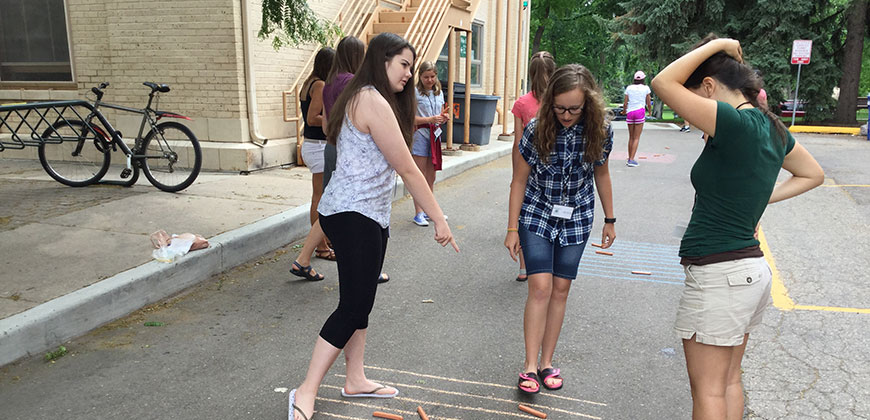
Local junior high students at CSU’s summer Math Circles camp learn mathematics the fun way – with hands-on activities and real-world challenges, both ancient and modern. Credit: Jessica Gehrtz
The ancient Greeks built the Parthenon and engineered water mills – all without modern machines and equipment. But they also managed all of this architecture without another powerful tool: modern algebra.
So how did they figure out rules, such as the golden mean and pi? With their own version of geometric algebra. And as part of this year’s Colorado State University Math Circles camp, hosted by the Department of Mathematics in the College of Natural Sciences, more than two dozen local 8th and 9th grade students are getting to follow in their – and other mathematicians’ – footsteps.
Big problems, big solutions
The week-long day camp (part of the larger National Association of Math Circles) gives students a chance to explore some of the big questions – and big solutions – that math has to offer. It also provides an opportunity for junior high school students to get a feel for the university experience. They learn in real college classrooms in the Weber Building – and on chalk-adorned sidewalks and the green grass of the Oval – and are taught by CSU graduate students and faculty.
“Math Circles is a really great opportunity for students to be exposed to mathematics that they do not usually see in their regular math classes at school,” explains program co-coordinator Jessica Gehrtz, a graduate student in the math department. “It provides a fun, interactive environment in which students are able to explore the mathematics, learn some of the history and see how it can be applied in the real world.”
For the main activities of the day, the camp group breaks down into a boys’ section (“GaussMath,” named for the 19th century German mathematician Carl Friedrich Gauss) and girls’ sections (“FloMath,” named for Florence Nightingale, the 19th century British nurse and social reformer). On the action-packed schedule are lessons such as “We’ll Cross that Bridge When We Get There – An Introduction to Graph Theory,” “Infinity” and “It’s All Greek to Me: Math in the Ancient World.”
Chalk, bridges, ratio theory
On the first morning of the camp this week, the students were already getting tangled up in engaging mathematical quandaries. The boys were tracing steps across chalk-drawn bridges outside as they learned the concepts behind graphing theory. And the girls were getting a primer on fundamental ratios in different shapes, much as the ancient Greeks learned (well, with the addition of Smart Boards in this group’s case).
“The Greeks were amazing,” says Rachel Neville, a graduate student in the math department who is studying computational topology, leading the camp session. “They used these kinds of techniques to estimate pi. And now we’re going to try to track down pi,” she says to the students, getting out a spool of ribbon and a pair of scissors.
Soon, teams of girls were huddled together over large sheets of yellow butcher paper, ribbon and pencil in hand, strategizing to see how they, too, could find that magic number. Without using modern algebra. Or calculators.